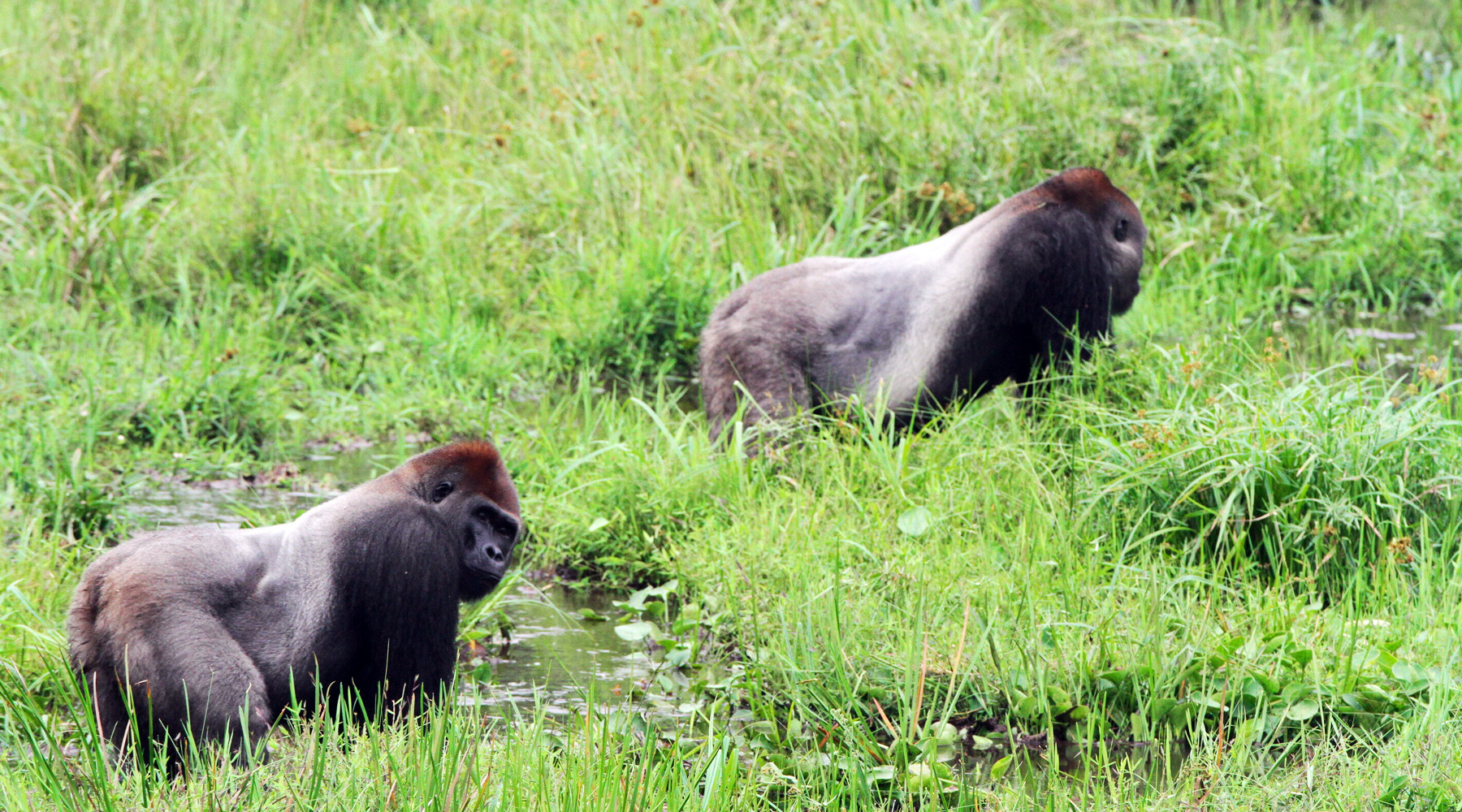Scientists from the University of Cambridge (UK) found that the gorillas, like people, have a complex social structure. A previously unknown fact is reported in the journal of the London Royal Society, Proceedings of the Royal Society B.
For six years, at two research sites in the Republic of the Congo, scientists have observed the social behavior of several hundred western lowland gorillas. As a result of the work, it became clear that within this species there is a developed social structure with several levels of connections - close, related and different social relations .
- Three groups of western gorillas peacefully coexist and feed on the same meadow
"It is not so easy to study the social organization of gorillas," said Robin Morrison, anthropologist at the University of Cambridge, lead author of the study. “Gorillas spend most of their time in dense forest, and it may take years for them to become accustomed to human presence.” They come to feast on aquatic plants to swampy areas free from trees. In such areas, teams of researchers will equip observation platforms to record the life of gorillas for many years from dawn to dusk. ”
Robin Morrison and her colleagues found out that besides an ordinary family, gorillas have the closest circle of contacts - a dispersed “extended” family of about 13 gorillas: aunts and uncles, grandmothers and grandfathers, cousins. Researchers claim that this species has the next social circle - a combined group of about 39 gorillas. It can be compared with the early settlement of man or the first village, scientists say.
If the dominant males were relatives, then they were more likely to be in the same group. At the same time, more than 80% of such males, although not close relatives, but perfectly interacted with each other as representatives of one social group of leaders.
- Dominant males of two different groups of western gorillas peacefully feed in a forest glade.
- © Wildlife Conservation Society
“Females spend time in their lives in several groups, which allows males who are not closely related to grow in one natal group. In some ways, they look like half-brothers, says Morrison. - Because of the connections formed, social relations may develop in adults. If we draw analogies with people, the time spent in each other’s company can be compared with old friendship. ”
The researchers also noted a special period of gorilla relationships, arising at a time when young males are separated from the family and get together in a “bachelor group”, because they are not yet ready for independent living.
- Young Gorillas Communicate After Eating
- © Wildlife Conservation Society
Scientists also argue that sometimes large communities of gorillas organize annual meetings, similar to festivals, but so far there is not enough information to confirm this. It is assumed that such collections are associated with the fruiting of their favorite fruits, when representatives of the species come together to collect them.
“Western gorillas often travel many kilometers a day in search of the fruits of a wide range of plants that are rare and unpredictable for fruit-bearing,” says Morrison. - Food is easier to find by collaborating in the search. In the early stages of life, the gorillas spend a lot of time in the family group, which contributes to their learning to search for food. Other long-term social ties also help in the cooperation and preservation of collective memory in the search for difficult-to-find food. ”
To gallery page
Researchers believe that the discovery of such a complex social structure in gorillas suggests that a person has a common ancestor with them within the same hominid family.
“The ratios between each of the levels of social relations in gorillas correspond to those observed not only in early human societies, but also among baboons, toothed whales and elephants. The social organization of primates varies greatly by species, but now the gorillas can trace the underlying structure, probably existing before our species diverged from development, and it is surprisingly well suited as a model of human social evolution. Our study once again demonstrates that these endangered animals are very intelligent and developed, and that people may not be as special as someone might like, believe, ”concluded Morrison.

